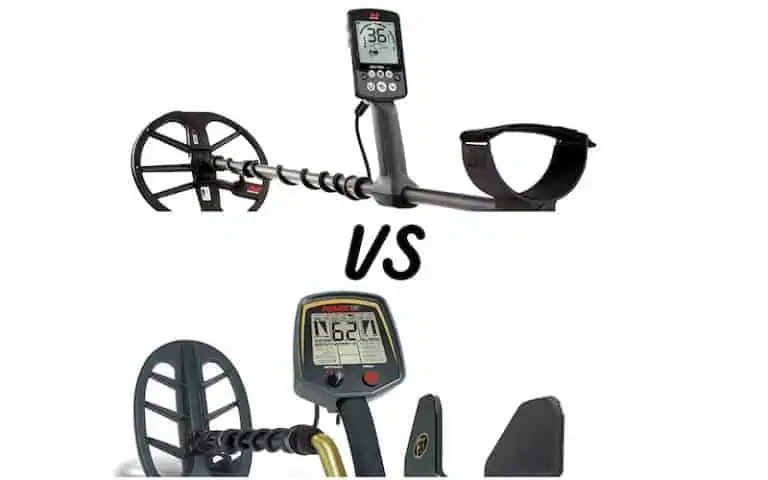Fisher F4 review
For more than 85 years, Fisher has been one of the biggest names in the metal detecting world. When it comes to quality and taking the hobby to the next level, Fisher metal detectors are a great investment if you plan to make metal detecting an activity of yours for years to come.
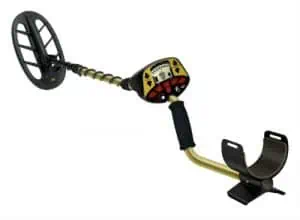
One of its mid-level machines, the Fisher F4 has earned a solid reputation with detectorists who want a better performance than entry-level detectors will offer them, but who don’t want to bankrupt their savings accounts either.
And to better help you, we’ve added the Fisher F4 to our interactive guide below that allows you to compare the F4 to other notable metal detectors currently on the market:
| Photo | Model | Price | Features |
|---|---|---|---|
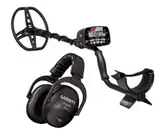 | Garrett AT Max | $$$ | Waterproof to 10 feet |
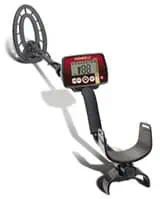 | Fisher F22 | $$ | 9″ Triangulated Concentric Coil |
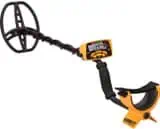 | Garrett Ace 400 | $$$ | 8.5 x 11" DD coil |
 | Minelab Vanquish 540 | $ | Search Modes: Coin, Relic, Jewelry, Custom, All Metal |
The F4’s Best Features
Whether you plan to look for coins, relics or spend a day hunting for pirate’s gold on the beach, the F4 can handle it. It’s a good overall multi-purpose machine.
The Fisher F4 will set you back about $400, and while you’ll get a good mid-level machine for that price, it isn’t as difficult to operate as some other mid-level machines are. It’s a user-friendly unit.
The F4 has several features detectorists need in a quality detector, including:
- Manual ground balancing.
- Numeric target identification that ranges from 0-99.
- A discrimination mode.
- An 11-inch bi-axial coil.
- Easy-to-read screen.
- A visual target identification based by category.
- Four different audio tones to help you identify metals.
Another nice feature of the F4 is its weight. It weighs under 3 pounds, which is light for a mid-level detector. While you might think something you drop hundreds of dollars on should have some heft to it, with metal detecting, you want to avoid extra weight whenever you can.
Why? Well, you’ll be carrying this machine for hours on end, so the lighter it is, the better. You don’t want to wake up the day after a hunt so sore you’re cursing the day you ever decided metal detecting would be a great hobby to pursue.

Below, please take a quick moment to view some of the best-selling metal detectors currently available for sale on Amazon. Then, compare and contrast them to the Fisher F4 as you progress through our review:
| BEST SELLERS |
|---|
| 1) Garrett AT MAX |
| 2) Bounty Hunter TK4 Tracker IV |
| 3) Bounty Hunter Gold Digger |
What the F4 Can’t Do
While the F4 is a good option for the money, it does have some limitations, such as:
If you’re using this detector for gold, some of the highly-mineralized soil you’ll find in gold prospecting areas may lead to false positives.
It can’t be used with accuracy on wet sand at salt water beaches.
Unless you’re planning to use it on shallow fresh water, you shouldn’t plan on doing much detecting in the water with it. The control box isn’t waterproof, although the coil is.
It doesn’t have a backlight, which is fine if you hunt during the day only. But if you like to be the first one on the beach when it’s still dark or you try to sneak in an hour or two of hunting after dusk, it’s a major inconvenience not to have a backlight.
Fisher F4 vs Garrett Ace 350
You’ll spend about $100 more for the F4 than you will for the Ace 350. The two machines are extremely close when it comes to weight and comfort.

The major perk you’ll see with the F4 is that it can find targets at a greater depth than the Garrett 350 metal detector can. The maximum screen display for the Ace 350 is a depth of 8+ inches, while the F4’s depth indicator goes to a depth of 10+ inches. Those two inches could be the difference between walking right over the find of your lifetime or digging it up.
The Ace 350, on the other hand, has a 12-segment target identification mode, compared to the 11-segment target identification mode the F4 has. It, unlike the F4, also employs enhanced iron resolution, which helps weed out the junky iron targets you probably don’t want to spend time digging.
The F4 has four audio tones, compared to the three the Ace 350 has. Another important feature the F4 has that the Ace 350 doesn’t is manual ground balancing. While the F4 has 0-99 numeric target identification, the Ace 350 doesn’t.
I would spend the extra $100 for the F4, even as a beginning detectorist, if I were choosing between these two units. The F4’s added depth and features makes it worth the extra money you’ll pay.
Fisher F4 vs Garrett Ace 400
These machines are comparable in price and function. The Ace 400 is only about $50 cheaper than the F4.

Both machines offer electronic pinpointing, which helps you close in on your target location with greater precision. While pinpointing is a nice feature to have, the pinpointing on some machines leaves a lot to be desired, and it does take some getting used to when you’re operating it.
As with the Ace 350, the Ace 400’s depth indicator only goes to 8+ inches, which isn’t as much as the 10+ inches the F4 offers. But on the flip side, the Ace 400 has a higher operating frequency than the F4 does. The F4 has a 5.9 kHz operating frequency while the Ace 400 has a 10 kHz operating frequency. That means the Garrett Ace 400 will pick up more targets with lower conductivity like gold and lead.
Both machines have 11-inch coils and also offer digital target identification, which can help you determine whether your signal is likely to be a coin, a ring or perhaps just another pull tab. Although there are no guarantees with metal detecting, a detectorist who gets a good feel for their machines and its capabilities may choose to forgo some digs that, according to the digital target identification, are likely to be junk. So digital target identification can be a great time-saving feature.
The F4 will give you one more audio tone than the Ace 400 does – it has four tones, compared to the 400’s three tones.
Although the Fisher F4’s depth indicator goes deeper than the Ace 400’s does, if I were going to buy one of these two machines, I would opt for the Ace 400. It’s a few dollars cheaper and it has a greater operating frequency. That matters to me since the idea of passing up on gold rings or tiny gold earrings with the F4 makes me uncomfortable.
Fisher F4 vs Fisher F2
Buying the Fisher F2 will save you about $200, but you’ll be sacrificing a lot in terms of performance for that money. It’s a low-end detector while the F4 is a mid-level machine.

Like the F4, the F2 has four-tone audio. They both also have the two-digit numeric target identification which will give you an indication what type of metal your target is.
While the F4 has an 11-segment visual target identification mode which helps you sort the probable trash targets from the good stuff, the F2 has an eight-segment visual target identification.
The F2 has an 8-inch concentric search coil while the F4 has an 11-inch bi-axial search coil. The size of the coil matters, but a bigger coil isn’t automatically better. Choosing which coil size you want depends on what kind of detecting you’re going to do.
An 8-inch coil is on the smaller size. Smaller coils are generally beneficially in extremely trashy areas because multiple targets won’t be competing for a detector’s attention like they would be with a larger coil. Smaller coils allow for better target separation in the areas where there are a lot of targets. For general metal detecting, I wouldn’t go any smaller than an 8-inch coil, and I prefer a slightly bigger coil so I can cover more ground.
Medium-sized coils, like the 11-inch one on the F4, are good for most normal conditions while metal detecting. They cover more ground than the smaller coils do, but they won’t perform as well in trashy environments.
If you are new to the hobby, the Fisher F2 may be a good option for you because of the price. If you aren’t sure that metal detecting is the hobby for you, but you want to give it a whirl, you should consider buying the F2 – it’s one of the good metal detectors for beginners.
If you’ve been detecting before or you know you’ll love it, you should keep saving your money until you can afford the F4. It may be tempting to have a metal detector in your hand sooner than that, but you’ll regret the purchase down the road because you’ll quickly want a better machine if you do much detecting at all.
F4 vs Fisher F5
You’ll need $100 more to buy the F5 than what you would spend on the F4.

They share a lot of the same features, including numeric 0-99 target identification, four-tone audio, and they both do well when you’re hunting for coins, relics or on dry beaches.
One feature the F5 has that the F4 doesn’t is phase lock, which helps you correctly adjust for the ground conditions you are facing.
The design of the control box is nice with the F5 because it has all the knobs grouped together in a convenient location that’s easy to reach.
The threshold feature on the F5 makes cutting back on constant chirping from your machine easy to do. If you use it in trashy areas, you can eliminate some of the signals you would normally get that would turn out to be junk, like a bit of foil or a twisted piece of scrap metal.
While the F5 does have some additional tricks up its sleeve, it definitely has a steep learning curve, and I think many beginners would be intimidated by that. As a new detectorist, I know I would have been. I was looking for something to get my feet wet before deciding what features were most important to me and under what conditions and locations I would be doing the bulk of my hunting.
I think beginning detectorists would be better off with the F4, which may not have as many features but is easier to operate.
Intermediate level detectorists would want to opt for the F5 over the F4 though because of its additional features.
- Please “like” our new Discover Detecting Facebook page!
You Also Might Like:
- What’s the Best Garrett Metal Detector?
- Buyer Guide: Gold Metal Detectors Under $1,000
- What’s the Best Whites Metal Detector?
- How to Use a Metal Detector to Find Amazing Treasure
- What’s the Best Bounty Hunter Metal Detector?
- Best Places to Go Metal Detecting for Beginners
- Why I Love Metal Detecting as a Hobby

